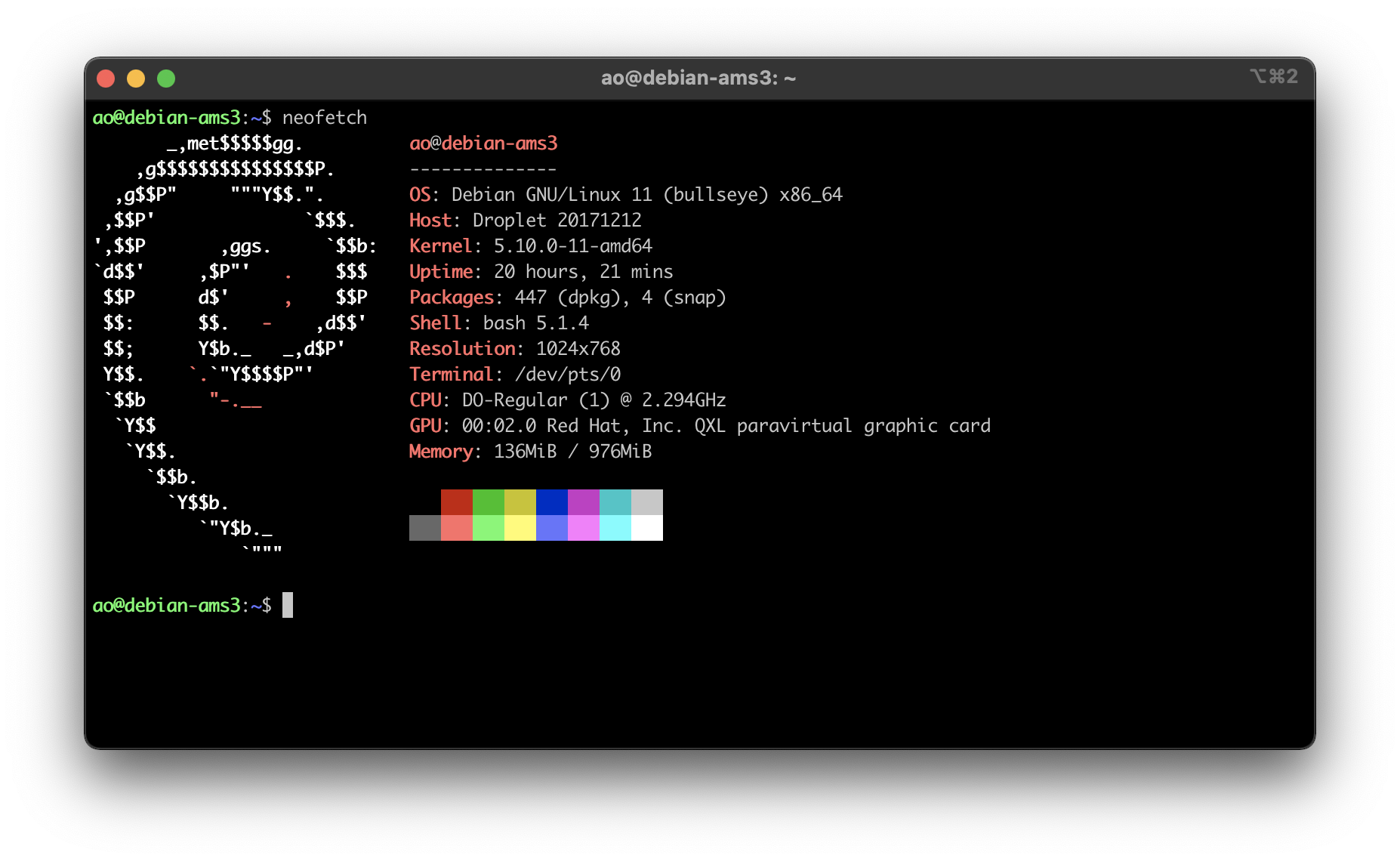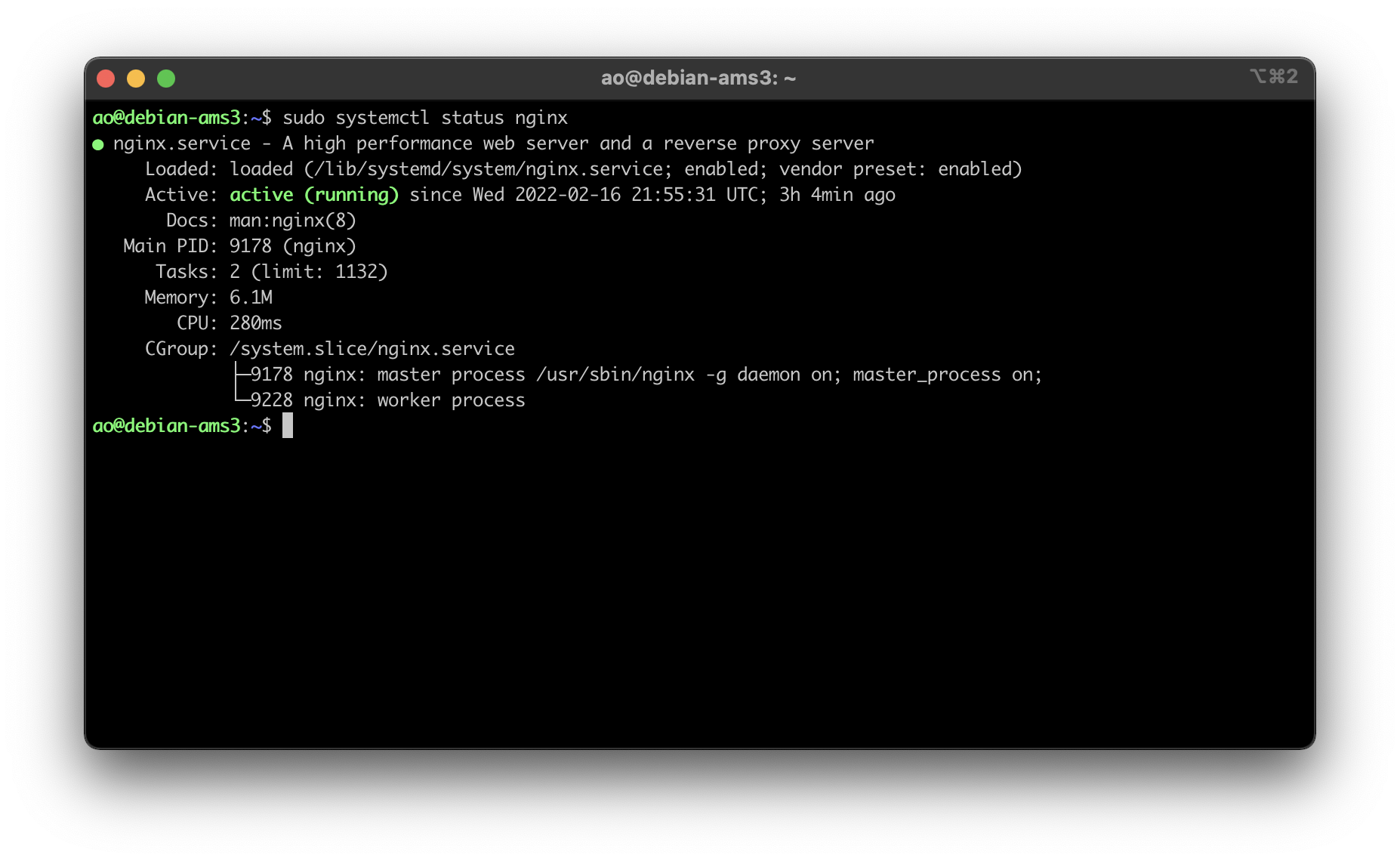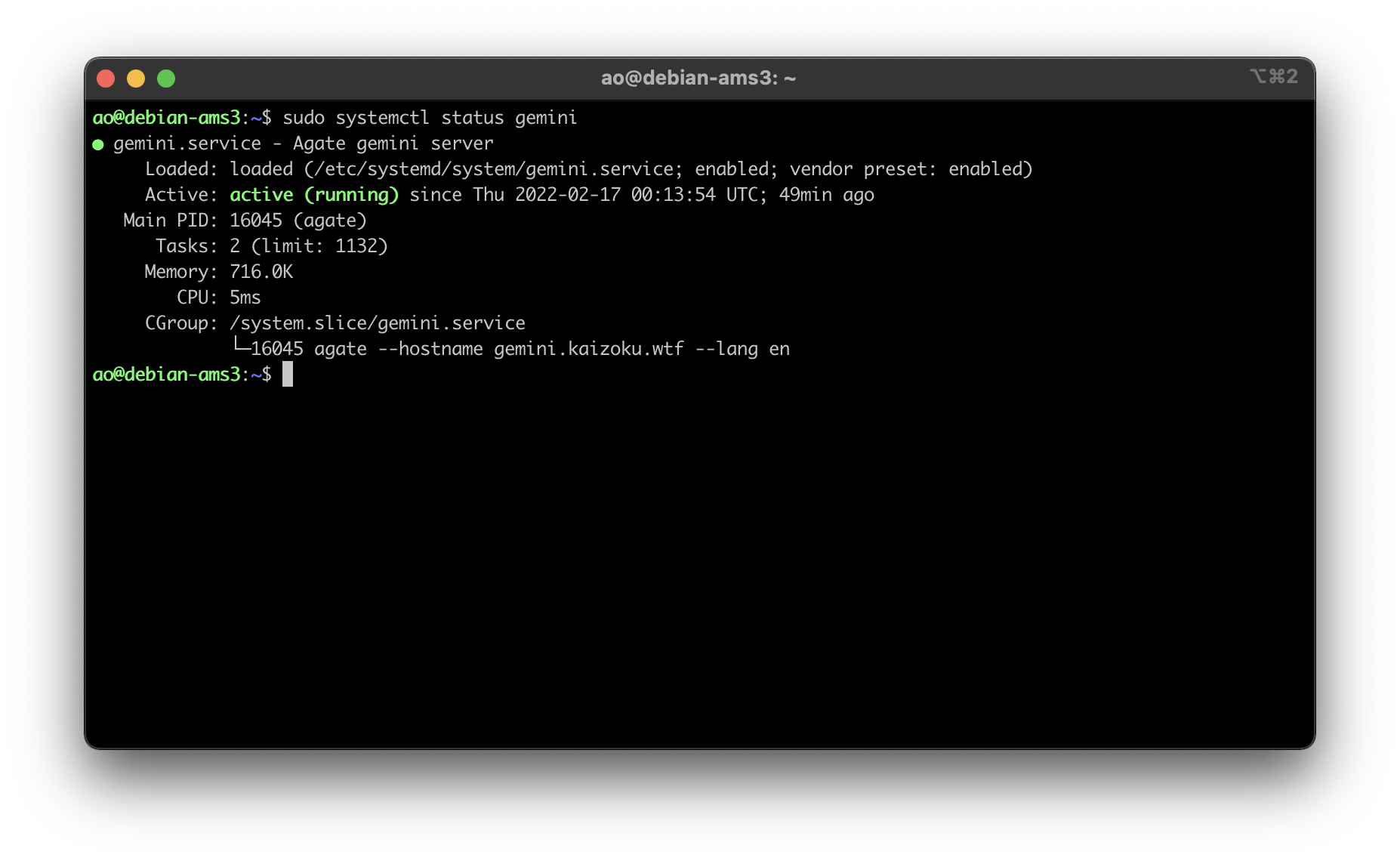diff options
| author | Christian Cleberg <hello@cleberg.net> | 2024-04-29 14:18:55 -0500 |
|---|---|---|
| committer | Christian Cleberg <hello@cleberg.net> | 2024-04-29 14:18:55 -0500 |
| commit | fdd80eadcc2f147d0198d94b7b908764778184a2 (patch) | |
| tree | fbec9522ea9aa13e8105efc413d2498c3c5b4cd6 /content/blog/2022-02-16-debian-and-nginx.md | |
| parent | d6c80fdc1dea9ff242a4d3c7d3939d2727a8da56 (diff) | |
| download | cleberg.net-fdd80eadcc2f147d0198d94b7b908764778184a2.tar.gz cleberg.net-fdd80eadcc2f147d0198d94b7b908764778184a2.tar.bz2 cleberg.net-fdd80eadcc2f147d0198d94b7b908764778184a2.zip | |
format line wrapping and fix escaped characters
Diffstat (limited to 'content/blog/2022-02-16-debian-and-nginx.md')
| -rw-r--r-- | content/blog/2022-02-16-debian-and-nginx.md | 128 |
1 files changed, 60 insertions, 68 deletions
diff --git a/content/blog/2022-02-16-debian-and-nginx.md b/content/blog/2022-02-16-debian-and-nginx.md index 8c9bb31..846b8df 100644 --- a/content/blog/2022-02-16-debian-and-nginx.md +++ b/content/blog/2022-02-16-debian-and-nginx.md @@ -10,34 +10,33 @@ draft = false  -I\'ve used various Linux distributions throughout the years, but I\'ve -never used anything except Ubuntu for my servers. Why? I really have no -idea, mostly just comfort around the commands and software availability. - -However, I have always wanted to try Debian as a server OS after testing -it out in a VM a few years ago (side-note: I\'d love to try Alpine too, -but I always struggle with compatibility). So, I decided to launch a new -VPS and use [Debian](https://www.debian.org) 11 as the OS. Spoiler -alert: it feels identical to Ubuntu for my purposes. - -I did the normal things when first launching the VPS, such as adding a -new user, locking down SSH, etc. If you want to see that level of -detail, read my other post about [How to Set Up a VPS Web +I've used various Linux distributions throughout the years, but I've never +used anything except Ubuntu for my servers. Why? I really have no idea, mostly +just comfort around the commands and software availability. + +However, I have always wanted to try Debian as a server OS after testing it out +in a VM a few years ago (side-note: I'd love to try Alpine too, but I always +struggle with compatibility). So, I decided to launch a new VPS and use +[Debian](https://www.debian.org) 11 as the OS. Spoiler alert: it feels identical +to Ubuntu for my purposes. + +I did the normal things when first launching the VPS, such as adding a new user, +locking down SSH, etc. If you want to see that level of detail, read my other +post about [How to Set Up a VPS Web Server](https://cleberg.net/blog/how-to-set-up-a-vps-web-server/). -All of this has been similar, apart from small things such as the -location of users\' home folders. No complaints at all from me - Debian -seems great. +All of this has been similar, apart from small things such as the location of +users' home folders. No complaints at all from me - Debian seems great. # Web Server: Nginx  -Once I had the baseline server configuration set-up for Debian, I moved -on to trying out [Nginx](https://nginx.org) as my web server software. -This required me to install the `nginx` and `ufw` -packages, as well as setting up the initial UFW config: +Once I had the baseline server configuration set-up for Debian, I moved on to +trying out [Nginx](https://nginx.org) as my web server software. This required +me to install the `nginx` and `ufw` packages, as well as setting up the initial +UFW config: ```sh sudo apt install nginx ufw @@ -48,9 +47,9 @@ sudo ufw status sudo systemctl status nginx ``` -Once I had the firewall set, I moved on to creating the directories and -files for my website. This is very easy and is basically the same as -setting up an Apache server, so no struggles here. +Once I had the firewall set, I moved on to creating the directories and files +for my website. This is very easy and is basically the same as setting up an +Apache server, so no struggles here. ```sh sudo mkdir -p /var/www/your_domain/html @@ -59,10 +58,9 @@ sudo chmod -R 755 /var/www/your_domain nano /var/www/your_domain/html/index.html ``` -The next part, creating the Nginx configuration files, is quite a bit -different from Apache. First, you need to create the files in the -`sites-available` folder and symlink it the -`sites-enabled` folder. +The next part, creating the Nginx configuration files, is quite a bit different +from Apache. First, you need to create the files in the `sites-available` folder +and symlink it the `sites-enabled` folder. Creating the config file for your domain: @@ -95,11 +93,10 @@ sudo ln -s /etc/nginx/sites-available/your_domain /etc/nginx/sites-enabled/ ``` This will make your site available to the public (as long as you have -`your_domain` DNS records pointed at the server\'s IP -address)! +`your_domain` DNS records pointed at the server's IP address)! -Next, I used [certbot](https://certbot.eff.org/) to issue an HTTPS -certificate for my domains using the following commands: +Next, I used [certbot](https://certbot.eff.org/) to issue an HTTPS certificate +for my domains using the following commands: ```sh sudo apt install snapd; sudo snap install core; sudo snap refresh core @@ -108,17 +105,15 @@ sudo ln -s /snap/bin/certbot /usr/bin/certbot sudo certbot --nginx ``` -Now that certbot ran successfully and updated my Nginx config files to -include a `443` server block of code, I went back in and -edited the config file to include security HTTP headers. This part is -optional, but is recommended for security purposes; you can even test a -website\'s HTTP header security at [Security +Now that certbot ran successfully and updated my Nginx config files to include a +`443` server block of code, I went back in and edited the config file to include +security HTTP headers. This part is optional, but is recommended for security +purposes; you can even test a website's HTTP header security at [Security Headers](https://securityheaders.com/). -The configuration below shows a set-up where you only want your website -to serve content from its own domain, except for images and scripts, -which may come from `nullitics.com`. All other content would -be blocked from loading in a browser. +The configuration below shows a set-up where you only want your website to serve +content from its own domain, except for images and scripts, which may come from +`nullitics.com`. All other content would be blocked from loading in a browser. ```sh sudo nano /etc/nginx/sites-available/your_domain @@ -143,39 +138,36 @@ sudo systemctl restart nginx ## Nginx vs. Apache -As I stated at the beginning, my historical hesitation with trying Nginx -was that the differences in configuration formats scared me away from -leaving Apache. However, I prefer Nginx to Apache for a few reasons: - -1. Nginx uses only one config file (`your_domain`) vs. - Apache\'s two-file approach for HTTP vs. HTTPS - (`your_domain.conf` and - `your_domain-le-ssl.conf`). -2. Symlinking new configurations files and reloading Nginx are way - easier than Apache\'s process of having to enable headers with - `a2enmod mod_headers`, enable PHP with - `a2enmod php` (plus any other mods you need), and then - enabling sites with `a2ensite`, and THEN reloading - Apache. -3. The contents of the Nginx config files seem more organized and - logical with the curly-bracket approach. This is a minor reason, but - everything just felt cleaner while I was installing my sites and - that had a big quality of life impact on the installation for me. - -They\'re both great software packages, but Nginx just seems more -organized and easier to use these days. I will certainly be exploring -the Nginx docs to see what other fun things I can do with all of this. +As I stated at the beginning, my historical hesitation with trying Nginx was +that the differences in configuration formats scared me away from leaving +Apache. However, I prefer Nginx to Apache for a few reasons: + +1. Nginx uses only one config file (`your_domain`) vs. Apache's two-file + approach for HTTP vs. HTTPS (`your_domain.conf` and + `your_domain-le-ssl.conf`). +2. Symlinking new configurations files and reloading Nginx are way easier than + Apache's process of having to enable headers with `a2enmod mod_headers`, + enable PHP with `a2enmod php` (plus any other mods you need), and then + enabling sites with `a2ensite`, and THEN reloading Apache. +3. The contents of the Nginx config files seem more organized and logical with + the curly-bracket approach. This is a minor reason, but everything just felt + cleaner while I was installing my sites and that had a big quality of life + impact on the installation for me. + +They're both great software packages, but Nginx just seems more organized and +easier to use these days. I will certainly be exploring the Nginx docs to see +what other fun things I can do with all of this. # Gemini Server: Agate  -Finally, I set up the Agate software on this server again to host my -Gemini server content, using Rust as I have before. You can read my -other post for more information on installing Agate: [Hosting a Gemini +Finally, I set up the Agate software on this server again to host my Gemini +server content, using Rust as I have before. You can read my other post for more +information on installing Agate: [Hosting a Gemini Server](https://cleberg.net/blog/hosting-a-gemini-server/). -All in all, Debian + Nginx is very slick and I prefer it over my old -combination of Ubuntu + Apache (although it\'s really just Nginx \> -Apache for me, since Debian seems mostly the same as Ubuntu is so far). +All in all, Debian + Nginx is very slick and I prefer it over my old combination +of Ubuntu + Apache (although it's really just Nginx > Apache for me, since +Debian seems mostly the same as Ubuntu is so far). |
